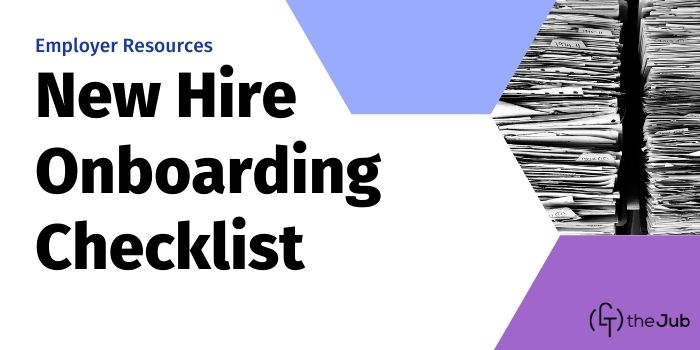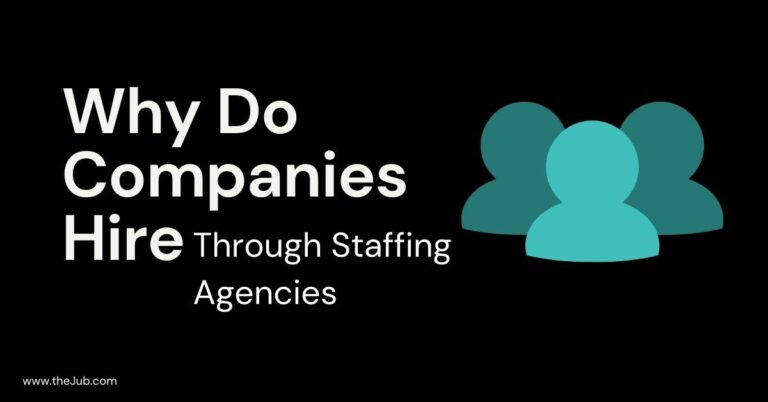Onboarding Tips For New Employees in 2023

New Hire Onboarding
Properly onboarding new employees into your organization is a vital step in their transition to becoming productive team members. But as we all know, starting something new can often be an intimidating experience for both the employer and the employee.
As a new employee, I needed the proper time to get up to speed with my new company and feel comfortable in my current work environment. A solid onboarding program helped move things along and put me in a position to succeed early on.
This checklist will help guide you through the onboarding process so that you can ensure a smooth transition for all involved.
5 Tips for Onboarding New Employees
1. Sending the Initial Email
As soon as you start onboarding a new employee, send a welcome email so they have all the details required for their new job. The tone of this email should be welcoming and accepting so that they immediately feel comfortable with this change.
You should also provide all of the essential details, such as office locations, start dates and times, and what they should bring along to their first day on the job.
2. Explaining the Benefits Package
Benefits packages should be explained thoroughly, which your HR team often tackles. Employees must be informed of the benefits offered by the company (like vacation time and medical coverage).
3. What does their First Day Look Like
If this wasn’t done prior, have them fill out any paperwork and required forms with HR. Common conditions include the W-9, W-4, state withholding, or any other packets needed to work for your company legally.
New hires should be given a name tag, uniform (if necessary), and other equipment before their first day. They should also be aware of company policies and have the information required to log into email accounts and software before kicking things off.
4. Introduce them to the gang
Next, introduce them to their direct supervisor and anyone else they report to so they can establish what their new role will entail.
Have your employee meet the managers by setting up an open orientation meeting or short work lunch so everyone can get to know each other. If you are part of a smaller company, you may conduct 1:1 meetings as well.
5. Find Mentors and assign Goals
You can also use onboarding to assign mentors who will help them succeed in their new jobs. This will ensure that they are producing results within the first 30-60-90 days and have a clear path to success.
Mentors will also allow new hires to learn on-the-job skills, increasing job satisfaction.
What is onboarding?
Onboarding is the process of integrating new hires into an organization or business. It includes activities that allow new employees to complete an initial orientation process and learn about the organization and its overall structure, culture, vision, mission, and values.
What does the onboarding process look like?
The onboarding process typically includes information about how to get started, introductions to the team, what to expect during the first few weeks, and how to stay motivated throughout the onboarding process.
In some organizations, onboarding can sometimes be confused with orientation. Orientation is a component of the onboarding process, but the onboarding process is a lot more comprehensive than just filling out forms.
The onboarding process can also be an integral part of retaining your employees during a tough job market. Research by the HRCI has shown that a well-planned/executed onboarding process can lead to 58% of new employees staying with a company for at least three years.
What is the 90-day onboarding evaluation?
After 90 days, you should be able to properly evaluate your new hire and ensure they have completed all onboarding tasks.
HR might also ask the new employee for feedback about the company culture and the overall onboarding process to make adjustments when needed. You can measure your employee’s progress by:
- After 90 days, employees should be able to complete most tasks independently without supervision.
- Managers should review KPIs and metrics to ensure they’re realistic and attainable.
- Employees should receive regular feedback about how well they’ve done.
- Managers should continue to facilitate socialization and relationships in the workplace.
- Job shadowing could help an employee who needs more time to settle into a role if they are having trouble setting in or reaching their goals.
Final Thoughts | New Hire Onboarding Checklist
The best way to onboard someone new is to have a plan and follow through with it. New employees require time to get up to speed with the company to prevent issues and mistakes from happening.
A good onboarding program helps new hires feel comfortable in their unfamiliar environment and gives them the tools and resources needed to succeed.
Building trust between managers and staff takes time, but it is worth it in the end. We hope this has helped steer you in the right direction for building out your onboarding process.
Best of luck with your new hires!
Title: New Hire Onboarding Tips
Category: Employers
Tags: onboarding checklist, new hire onboarding, onboarding new employees, new hire onboard checklist, onboard new hires
Co-Author: Becky is a contributor for theJub. She’s a writing and talent acquisition specialist who loves to apply her skills through creative writing and editing.





